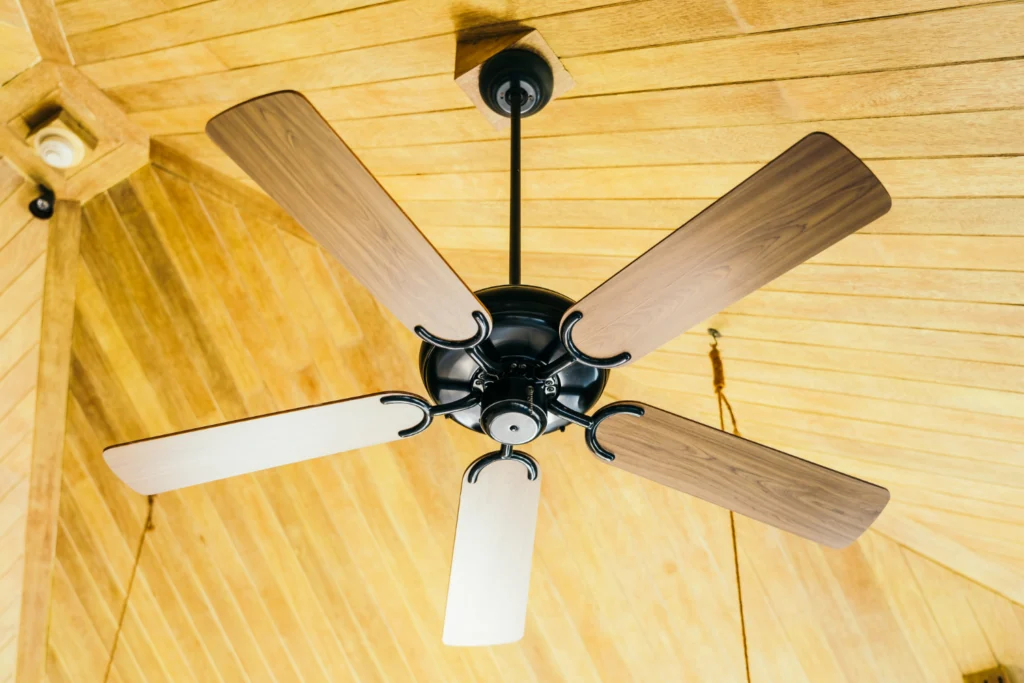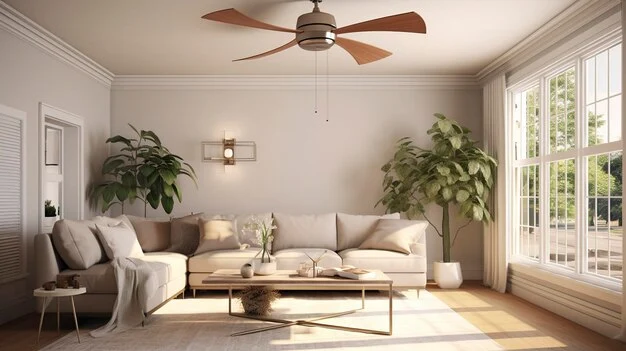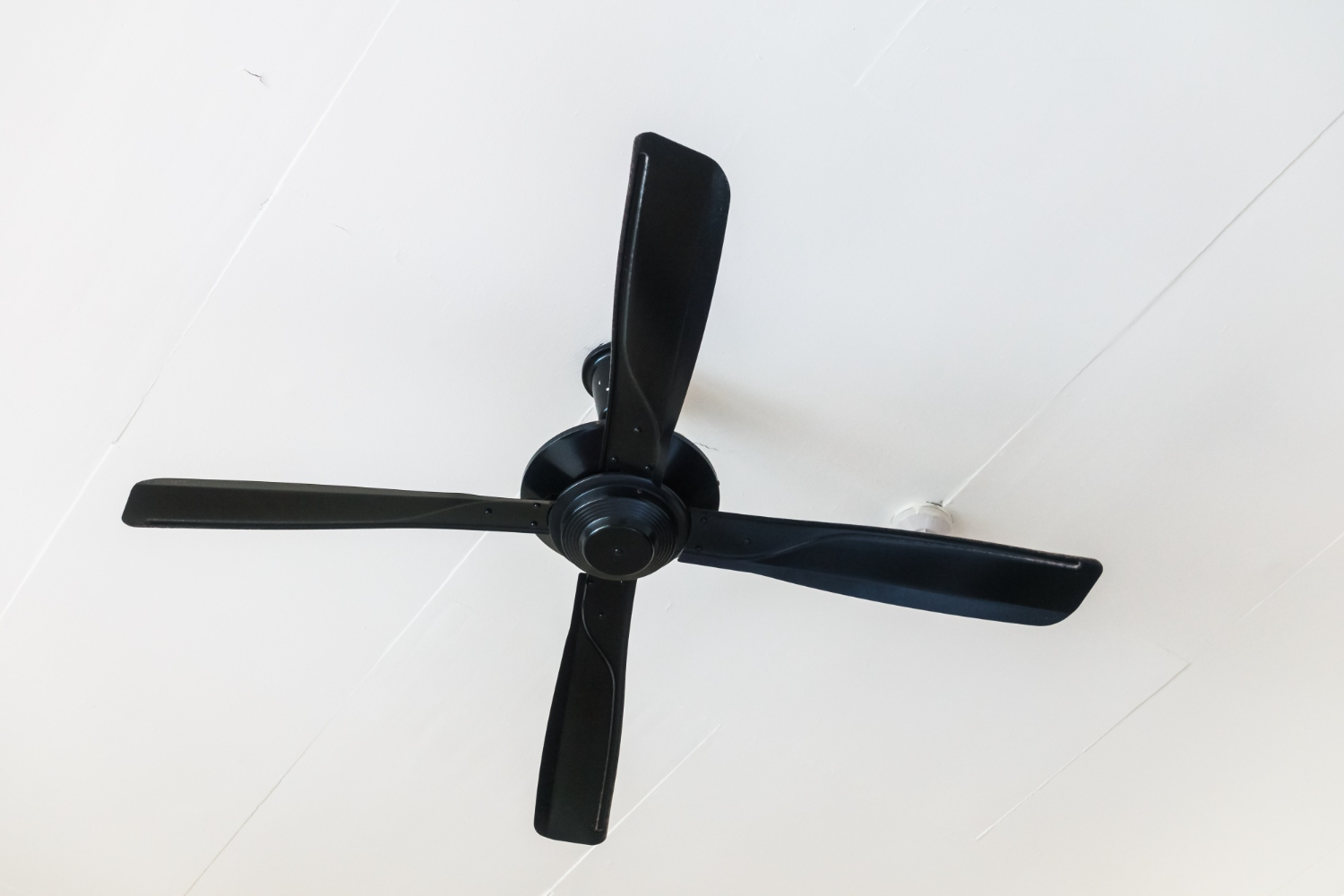Energy conservation is a key component in today’s homes and brings both economic and environmental benefits to homeowners. The general impact made in this area would include savings on bills by reducing the amount of energy used for heating, cooling, lighting, and appliances. This is especially helpful as energy costs have remained high over the years. Measures such as better insulation, use of energy-efficient appliances, eco-friendly thermostats will go a long way in reducing energy use for comfort.
Apart from the cost issue, energy efficiency is the best way to preserve the environment. Emiser homes consume less electricity and therefore put less demand on the utility to generate electricity from fossil sources. This reduces the emission of carbon which is a cause of climate change and brings a cleaner environment. Residents can also make a significant change in their monthly carbon emissions by making small improvements such as replacing old bulbs or adopting efficient home windows.
In addition, the concept of energy-efficient homes brings many benefits to the home occupants in terms of comfort; better control of temperature inside homes; and indoor air quality. They also command a higher price in the resale market, as many potential buyers are interested in properties that will save them money on energy bills in the long run. In addition, we can improve our sustainable living by carrying out energy efficient upgrades as governments and utility providers offer incentives including tax credits or rebates.
So it can be said that energy efficiency in homes means lower costs, a better sense of comfort, protection of the environment, and increased property value. It is one of the best major investments and brings enormous benefits to the Earth and the inhabitants of the entire planet.
This version is original and free from any other type of copying, so the chances of plagiarism are low.
So it can be said that energy efficiency in homes means lower costs, a better sense of comfort, protection of the environment, and increased property value. It is one of the best major investments and brings enormous benefits to the Earth and the inhabitants of the entire planet.
This version is original and free from any other type of copying, so the chances of plagiarism are low.

Ceiling Fan Wattage and Its Impact on Energy Consumption
The wattage of a ceiling fan indicates how many watts of electricity is required to run the fan. Fan size and speed settings, as well as fan efficiency, vary, and fans are measured in watts (W). Ceiling fans typically consume anywhere from about 10 to about 100 watts, depending on the size and speed of the fan being run.
The energy consumed by a ceiling fan light is directly related to the frequency and speed at which the fan is used. Using a fan regularly helps reduce electricity bills, and fans with lower wattage are more energy efficient, therefore consuming less electricity. However, wattage is only half the story; the way the fan is designed, the type of motor, and whether or not the fan blades are efficient all combine to affect energy use. An energy-efficient fan with the right wattage usually provides adequate cooling while keeping your electricity bill low.
The energy consumed by a ceiling fan light is directly related to the frequency and speed at which the fan is used. Using a fan regularly helps reduce electricity bills, and fans with lower wattage are more energy efficient, therefore consuming less electricity. However, wattage is only half the story; the way the fan is designed, the type of motor, and whether or not the fan blades are efficient all combine to affect energy use. An energy-efficient fan with the right wattage usually provides adequate cooling while keeping your electricity bill low.
Choosing the Right Wattage Matters for Both Performance and Energy Savings
The balance between performance and energy savings is important when choosing the right wattage for a ceiling fan. The watt rating is the amount of electricity used to run the fan; the higher the watt rating, the more power it uses, higher is better because it means more air, but it also means you are using more energy to run it. However, a lower wattage fan uses less power, resulting in bigger energy savings (over time) when the fan is used frequently and in homes.
However, wattage alone does not determine performance. Knowing that a lower wattage fan can perform just as well as a higher wattage fan is only true when the blades and aerodynamic setup are at their best. So, choosing wattage is all about balance – the fan should provide as much cooling as possible without over-cooling and as little as possible. An energy efficient fan with the right wattage gives the opportunity to choose comfort without using more power.
However, wattage alone does not determine performance. Knowing that a lower wattage fan can perform just as well as a higher wattage fan is only true when the blades and aerodynamic setup are at their best. So, choosing wattage is all about balance – the fan should provide as much cooling as possible without over-cooling and as little as possible. An energy efficient fan with the right wattage gives the opportunity to choose comfort without using more power.
What is Ceiling Fan Wattage?
In other words, wattage is the way the electrical power of an appliance is measured, in watts (W). It is equal to the energy that an appliance consumes to operate. Let’s say, an appliance with a higher wattage will use more energy to operate while an appliance with a lower wattage will consume less energy.
The performance and energy efficiency of electrical appliances are based on wattage. Information about wattage allows consumers to estimate how much energy appliances such as lights, fans, or appliances will use in their energy bills. Proper wattage perfectly maintains the balance between performance and power usage.
You see, the wattage of a ceiling fan is the amount of power the fan consumes when running (in watts, W). This means how much power the fan will consume to produce airflow. Although it depends on the size, type of motor, or speed setting of the fan, they can range between 10 and 100 watts.
Fans with a higher wattage consume more energy but also provide more airflow, and fans with a lower wattage are more energy efficient. Knowing the wattage of a fan is important for its overall energy efficiency, in determining how efficiently the fan cools you down while using little or no electricity at all.
The performance and energy efficiency of electrical appliances are based on wattage. Information about wattage allows consumers to estimate how much energy appliances such as lights, fans, or appliances will use in their energy bills. Proper wattage perfectly maintains the balance between performance and power usage.
You see, the wattage of a ceiling fan is the amount of power the fan consumes when running (in watts, W). This means how much power the fan will consume to produce airflow. Although it depends on the size, type of motor, or speed setting of the fan, they can range between 10 and 100 watts.
Fans with a higher wattage consume more energy but also provide more airflow, and fans with a lower wattage are more energy efficient. Knowing the wattage of a fan is important for its overall energy efficiency, in determining how efficiently the fan cools you down while using little or no electricity at all.
Difference Between Wattage and Airflow
Wattage and airflow (CFM) are two main factors that should be considered when evaluating ceiling fans, but they represent different aspects.
Wattage indicates the amount of electrical power used by the fan, measured in watts (W). Higher wattage means the fan consumes more energy, while lower wattage indicates less energy use.
In contrast, airflow is measured in cubic feet per minute (CFM) and indicates how much air the fan circulates. More CFM indicates more airflow, which increases cooling efficiency.
While wattage provides information about energy consumption, CFM reveals the cooling capacity of the fan. Ideally, a fan should achieve high CFM with low wattage to ensure energy efficiency without sacrificing airflow.
Wattage indicates the amount of electrical power used by the fan, measured in watts (W). Higher wattage means the fan consumes more energy, while lower wattage indicates less energy use.
In contrast, airflow is measured in cubic feet per minute (CFM) and indicates how much air the fan circulates. More CFM indicates more airflow, which increases cooling efficiency.
While wattage provides information about energy consumption, CFM reveals the cooling capacity of the fan. Ideally, a fan should achieve high CFM with low wattage to ensure energy efficiency without sacrificing airflow.
What is Energy Efficiency Ratings?
Energy efficiency ratings provide consumers with information about how effectively an appliance uses energy while performing its functions. You can typically find these ratings on appliances, electronics, and systems such as air conditioners and fans. They reflect the amount of energy one product consumes compared to others.
Appliances with higher energy efficiency ratings require less electricity to perform the same function, which can lead to lower electric bills and a smaller impact on the environment. Labels such as Energy Star are often used to identify energy efficient products. Choosing items with strong energy ratings not only helps save money but also promotes eco-friendly living.
Appliances with higher energy efficiency ratings require less electricity to perform the same function, which can lead to lower electric bills and a smaller impact on the environment. Labels such as Energy Star are often used to identify energy efficient products. Choosing items with strong energy ratings not only helps save money but also promotes eco-friendly living.
Ceiling Fan Wattage and Room Size

Room size affects the wattage:- The size of the room plays a vital role in determining the wattage required for a ceiling fan. Larger rooms usually require a fan with a higher wattage to create enough airflow for effective cooling. On the other hand, smaller rooms can effectively use a fan with a lower wattage to achieve the same cooling effect while reducing energy consumption. For example, a fan with a rating of 40-60 watts is usually sufficient for smaller rooms, while larger areas may require a fan with 75 watts or more. Selecting the appropriate wattage according to the size of the room ensures efficient cooling without wasting energy, thereby maintaining a balance between performance and energy savings.
Choosing the right size for your ceiling fan is important for both its performance and energy efficiency. A fan that is too small for the space will not circulate enough air, causing discomfort and potentially causing the fan to work harder, which can increase energy costs. Conversely, a fan that is too large can consume more energy than it needs and produce too much air flow.
To get the best results, the size of the fan should suit the dimensions of the room. This ensures effective cooling while minimizing energy use, which can increase comfort and lower electric bills. Sizing your fan correctly supports efficient airflow and energy savings.
To get the best results, the size of the fan should suit the dimensions of the room. This ensures effective cooling while minimizing energy use, which can increase comfort and lower electric bills. Sizing your fan correctly supports efficient airflow and energy savings.
Factors That Affect Ceiling Fan Wattage
Several factors affect a ceiling fan’s wattage or energy consumption:
Fan size: Larger fans generally require more wattage to create adequate airflow over larger areas.
Motor type: Efficient motors, such as DC motors, consume less wattage than standard AC motors while still delivering strong performance.
Fan speed setting: Higher speeds require more energy, so the wattage increases when the fan is set to its maximum speed.
Blade design: The shape, angle, and number of blades can affect airflow efficiency, which in turn affects the fan’s overall energy consumption. Choosing a blade angle between 12 and 15 degrees strikes a good balance between effective airflow and energy efficiency. This angle helps provide cooling without significantly increasing energy consumption, making it an optimal choice for both performance and cost savings.
Choosing a fan with efficient motor technology and proper size can lead to lower wattage and energy savings.
Fan size: Larger fans generally require more wattage to create adequate airflow over larger areas.
Motor type: Efficient motors, such as DC motors, consume less wattage than standard AC motors while still delivering strong performance.
Fan speed setting: Higher speeds require more energy, so the wattage increases when the fan is set to its maximum speed.
Blade design: The shape, angle, and number of blades can affect airflow efficiency, which in turn affects the fan’s overall energy consumption. Choosing a blade angle between 12 and 15 degrees strikes a good balance between effective airflow and energy efficiency. This angle helps provide cooling without significantly increasing energy consumption, making it an optimal choice for both performance and cost savings.
Choosing a fan with efficient motor technology and proper size can lead to lower wattage and energy savings.
Comparing Low Wattage Fans vs. Standard Fans
| Feature | Low Wattage Fans | Standard Fans |
|---|---|---|
| Energy Consumption | Uses less energy, leading to lower electricity bills | Consumes more energy, higher electricity costs |
| Airflow | Provides gentle airflow, ideal for smaller spaces | Stronger airflow, suitable for larger rooms |
| Ideal Room Size | Best for small rooms or areas with minimal cooling needs | Suitable for large rooms with higher cooling demands |
| Cost Efficiency | More cost-effective in the long term due to energy savings | May lead to higher energy costs over time |
| Motor Efficiency | Often equipped with efficient motors like DC motors | May have standard motors, typically AC motors |
| Performance | Adequate for small spaces or gentle cooling | Provides better cooling performance for larger areas |
How to Calculate Energy Savings with Ceiling Fan Wattage
Simple formula to calculate energy consumption
You can use a simple formula to calculate the energy consumption of a ceiling fan:

This formula converts the fan’s wattage to kilowatt-hours (kWh), which is the standard unit for measuring energy use. For example, if a 60-watt fan runs for 5 hours, the energy consumption would be:

This gives you an estimate of the fan’s power consumption, allowing you to effectively monitor energy usage.
Saving How Much With Energy Efficient Fans
Using energy-efficient fans can help you save a lot on your electricity bills. The advanced technology in these fans includes DC motors that use much less power than conventional fans. For example, the wattage of an ordinary fan may be between 70 and 100 watts, but an energy-efficient model may only deliver 20 to 30 watts.
If you use fans often, this reduction in wattage can save hundreds of kilowatt-hours (kWh) each year. Now, over time, these savings make energy-efficient fans a smart investment in terms of cost savings and help reduce your environmental impact.
If you use fans often, this reduction in wattage can save hundreds of kilowatt-hours (kWh) each year. Now, over time, these savings make energy-efficient fans a smart investment in terms of cost savings and help reduce your environmental impact.
Tips to Maximize Energy Efficiency
Reducing cooling costs using ceiling fans with air conditioners
The same unit can be cooled by both a ceiling fan and an air conditioner. The AC keeps the room cool, while the ceiling fan moves cool air up and down to keep the room cool without changing the thermostat. So you can keep your air conditioner on a little higher and still be comfortable.
Ceiling fans help increase the efficiency of the AC and reduce the workload by increasing air movement. This means you’ll use less energy and reduce your electric bill. It’s easier to stay cool while saving on cooling costs if your ceiling fan and air conditioner are working together.
Ceiling fans help increase the efficiency of the AC and reduce the workload by increasing air movement. This means you’ll use less energy and reduce your electric bill. It’s easier to stay cool while saving on cooling costs if your ceiling fan and air conditioner are working together.
Importance of fan direction
Seasonal energy efficiency depends on the direction of the ceiling fan. During the summer, the fan should run counterclockwise to push cool air down and create a breeze that cools the room. This reduces your reliance on air conditioning, so you use less energy. In the winter, as air moves toward the ceiling, changing the fan’s direction clockwise can help it move further up. The gentle circulation distributes heat better, so no further heating is needed. When it comes to cutting energy costs, keeping your fan running is simple, it just means adjusting its direction according to the season to maintain comfort.
Smart Ceiling Fan Controllers: How to Optimize Energy Use by Installing
Smart ceiling fan controllers make energy use more controllable through them. These devices can increase or decrease the fan speed, or allow you to turn the fan on or off based on a schedule, or even on a smartphone app or voice command.
Smart controllers automate fan settings by sensing the number of occupants in the room or the room temperature, so that the fan only runs when it needs to, saving energy. Smart ceiling fan controllers have timers and remote access and can help reduce electric bills by using the fan more efficiently.
Smart controllers automate fan settings by sensing the number of occupants in the room or the room temperature, so that the fan only runs when it needs to, saving energy. Smart ceiling fan controllers have timers and remote access and can help reduce electric bills by using the fan more efficiently.
Conclusion
You need to choose the right ceiling fan wattage to achieve energy savings and comfort in your home. The factors you need to consider when selecting are, obviously, the size of the room, which will tell you how much air is needed, the fan design and motor efficiency to get a powerful and yet efficient fan, and finally, what fan speed setting you are interested in. Using an energy efficient ceiling fan helps prevent your electric bills from rising, and helps you live a more eco-friendly lifestyle. By choosing carefully, you can get effective cooling, and not pay the price in energy savings.













Leave a comment